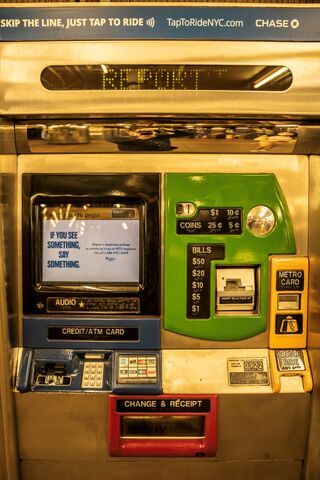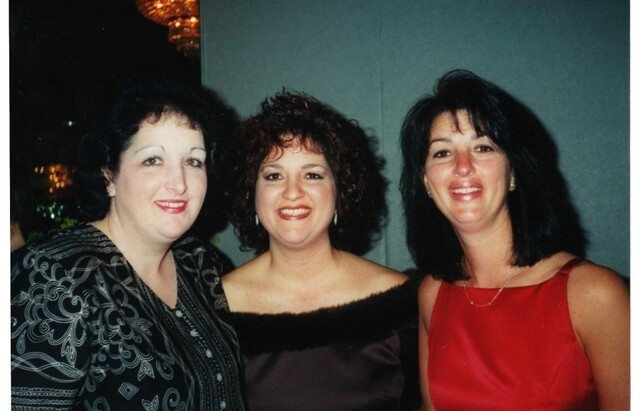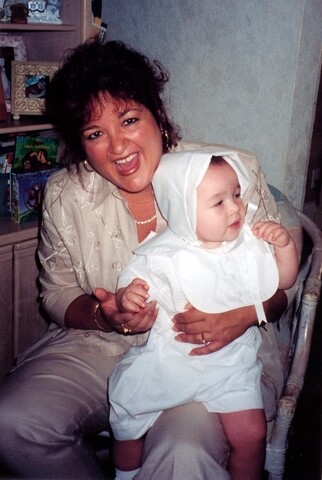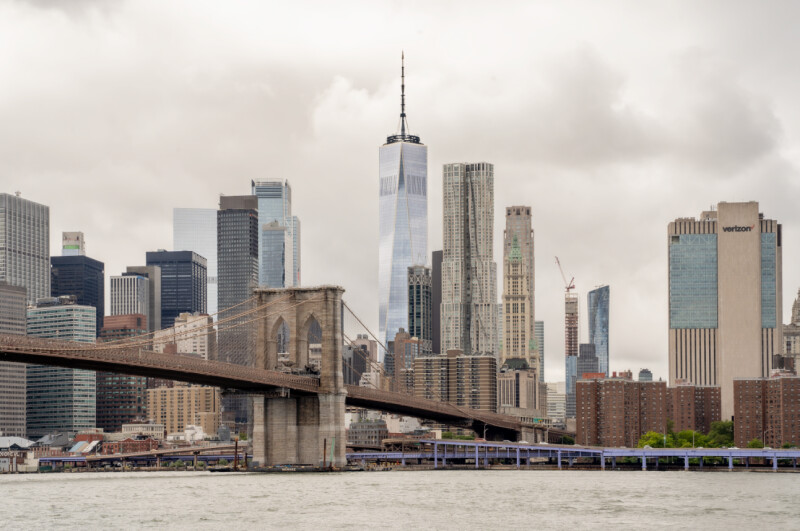Editor’s note: This article first appeared as the cover story in the September/October 2021 issue of LDS Living magazine.
As smoke and ash billowed up from what had become a tomb for more than 2,700 people, a man named Allen Kay sat in his office on Fifth Avenue in New York City and pulled out a 3-by-5-inch index card.
He worked for an advertising agency in Manhattan, and on September 12, 2001, as he thought about the tragedy that had just been inflicted on his city, he wanted to do something. He wanted to help prevent another disaster like the one he was witnessing—to do something positive in the literal cloud of gloom rising over New York City. So on that note card, he jotted down the words “If you see something, say something.”
When the Metropolitan Transportation Authority came calling for a way to improve security by encouraging customers to report suspicious activity or unattended packages, Kay had his index card ready. Now his words are used in public transportation systems not just in New York City, but around the world. As The New York Times wrote, “The phrase captured, with six simple words and one comma, the security consciousness and dread of the times.”1

And I had no idea.
Last year, I rode the Salt Lake City Trax, a public transportation light rail system, for months and frequently heard those six simple words broadcast over the intercom. But to me, they were simply another automated message to passengers—similar to the ones reminding us which stop was coming up or which side of the train to exit. I didn’t know those six words carried deep meaning. I didn’t know that “See something, say something” was penned as a direct response to one of the most horrific days in American history—a day when 2,977 lives were lost, not only in New York, but at the Pentagon in Arlington, Virginia, and in a field near Shanksville, Pennsylvania.2
In fact, there are a lot of things I didn’t know about that day of smoke and death.
Perhaps it’s because I was only 4 years old when it happened. I have a very faint memory of sitting in the public library in Kaysville, Utah, and feeling scared as adults told us something bad was happening—but honestly, I’m not even sure if that memory is accurate.
But a day like that, filled with both terror and heroism, should demand my awareness and respect, even if it doesn’t have my memories. I recently have been shocked to find out how 9/11 surrounds me. Up until this year, I didn’t even know that fellow Latter-day Saints from my hometown were aboard Flight 11. Mary Alice Wahlstrom and her daughter Carolyn Beug died on that plane. They never came back to Kaysville. They never saw the memorial that was built for them at a small park on the corner of my best friend’s street—a memorial I didn’t even know existed during the years I drove past it on my way to sleepovers and birthday parties.3
But this year on the 20th anniversary of 9/11, I am going to stop and visit that memorial. With what I’ve learned over the past few months, how could I simply drive by? The conversations I’ve had with lifelong New Yorkers have been nothing short of humbling (and I’ve fallen in love with the iconic NYC accent). My time researching firsthand accounts, news coverage, and photo galleries is best described as captivating in both a horrific and beautiful way—hours of reading and listening passed without my notice. Now, I truly do “heart” New York, as the T-shirts say.
But my awe and respect aren’t limited to New York City. I get chills thinking about the bravery of the 40 innocent people flying over Pennsylvania aboard Flight 93 who refused to give in without a fight: The flight attendant who boiled water to throw at the hijackers. The passengers who led the way as they barged into the seized cockpit. The hearts that must have raced as the plane plummeted to the ground, saving other lives that would have ended had the hijackers reached their intended destination.4
My heart goes out to those who died at the Pentagon just because they went to work that day. One of those employees who was killed in his office was Latter-day Saint Brady Howell; he died just two days before he and his wife had planned to go home and visit family in Idaho. His family later testified, “In that aura of hopelessness . . . the gospel was what gave us hope.”5
After learning all of this, I am sure of one thing: 4-year-old me may not have realized what happened on 9/11, but 24-year-old me definitely should.
We all should.
I am here to write about 9/11 not as someone who was there, but as someone who wasn’t. I am part of a generation who doesn’t remember those tragic events firsthand. But I believe we will be a more respectful and grateful generation, more appreciative of life, if we learn about what people went through that day. And, paradoxically enough, I also believe we will all better understand God’s goodness and love by learning from those whose lives were changed by a day of evil and hate.
First, let me introduce you to Michele McComb and Connie Labetti. They are sisters from Staten Island, New York, whose lives were forever changed on 9/11—Michele because of what she saw, heard, and felt from outside the Twin Towers, and Connie because of what she saw, heard, and felt from inside them. Their stories are a powerful reminder to me of how precious life is, how brave people can be, and how good God is—even as smoke billows.
One Within, One Without
“I have to tell you, Emily, that night the feeling I felt was pure evil. When I looked at the towers just crumbled to nothing . . . it was one of the worst feelings I have ever felt in my life. It was total darkness. It was hate.”
That is how Latter-day Saint Michele McComb felt as the sun set 20 years ago on 9/11. For Michele, that day had been a long one of panic and prayer. She remembers waking up that morning to a loud bang as her home on Staten Island shook. Alarmed, she ran to a window, her first thought being that a car had hit her house. But when she didn’t see or hear anything else, Michele returned to bed, only to be awakened again by an urgent phone call from her husband telling her to turn on the TV. When she did so and saw that the first tower had been hit, she began to cry and gasp her sister’s name: “Oh no, Connie, Connie!” Michele knew Connie worked on the 99th floor in one of the World Trade Center towers, but she couldn’t remember which. She tried calling her, but when Connie didn’t answer, all she could do was leave a voicemail begging her to leave the building.
“I [still] had the TV on, and I saw the other plane hit; I watched it live,” Michele says, beginning to choke up at the memory. “And I prayed like I’d never prayed before. . . . I said, ‘Oh please, God, get her out, get her out!’”
Michele would hear nothing for hours.

For Connie, September 11 had begun normally enough. She had worn her sneakers on her commute to work as she always did and then changed into heels once she arrived at her desk, like she always did. But as she began checking phone messages, Connie noticed that her boss, Ron Fazio, and a few coworkers were gathered around a window close to her desk. Soon Fazio started yelling for everyone to leave the building.
Connie looked out the window and saw a plane heading into the tower opposite her office—in fact, she was close enough to read “American Airlines” on the side and could see that the shades on the plane’s windows were all pulled down. Then she felt an intense heat and watched the plane crash into the tower. Fazio was still ordering everyone to quickly get to the stairs, perhaps concerned that power to the elevators would get cut off. Connie knew there was no way she could go down 99 flights of stairs in heels, so she took a moment to grab her sneakers before joining the throng of her coworkers at the stairwell.
At first, the stairwell was relatively empty. But 15 minutes into their descent, United Airlines Flight 175 crashed into Connie’s tower.
“It felt almost like a roller coaster going up and then crashing back down. If you weren’t holding on to the railing, you went flying. We knew [then] it wasn’t just a freak accident; it was an attack. It was very scary,” Connie says.
Then the stairwell became more crowded, until Connie was shoulder to shoulder with those on either side of her. As people came to the stairs, they brought word that the Pentagon had been hit, and some said the White House was under attack. Connie began to feel panicked and started to cry. As a single mother, her mind turned to her 10-year-old son and what he would do without her if she died on those stairs.
And then, exhausted and on the verge of full-blown panic, she heard a voice in her right ear—a voice she hadn’t heard in the 17 years since her father passed away.
“You’re not going to die in this building. You’re not going to die in this building,” Connie heard her dad say. Then, she heard another voice speaking into her left ear. This time it was her uncle, who had been a beloved father figure after her father died in 1985 until his own death in 1999. Using the nickname he had called her in life, Connie heard her uncle say, “Just take one step at a time, kiddo, just take one step at a time.”
“It sobered me up so I could continue the journey down the stairs,” Connie says.
Forty-five agonizing minutes later, Connie finally made it to the bottom and stayed in the building a moment longer to rest her tired, overheated body against a cool marble column. As she did, people from the stairwell began coming up and hugging her and thanking her. Confused, Connie turned to her friend and coworker Jillian and asked, “Why are they thanking me?”
“Connie, you don’t remember what you were saying when we were walking down the stairs?” Jillian replied. Connie had no idea what she was talking about.
“Every once in a while, you would just scream out, ‘We’re not going to die in the building; just take one step at a time,’” Jillian told her.
“I didn’t know it until I got to the bottom of the steps, but I was saying out loud what my father and uncle were telling me in my ears, and it was giving comfort to the people around me,” Connie tells me. “That was a miraculous, spiritual moment on such a horrible, horrific day.”
Ready to move again, Connie exited the tower. She made it to safety inside of a building one block away. Only five minutes later, the tower she’d just escaped collapsed.
“If we would have taken any more time on the stairs, I would not be here,” she says, crediting, in part, her father and uncle, who kept her moving. “I know from my experience on 9/11 that there is life after death and that our family is with us.”
Connie would spend four terrifying hours in the building she had escaped to. As the South and then the North Tower collapsed, the world outside became dark with smoke and falling debris. The people with her in the building were in hysterics, unsure if the city was being bombed. Finally, when the air began to clear, Connie and her friend Jillian, holding hands, ventured out to the street. Connie lived on Staten Island, but she didn’t want to be alone, so together they headed toward Jillian’s home in Queens.
After walking 13 miles, including going across the Brooklyn Bridge, they were able to meet Jillian’s husband, who drove them the rest of the way home. Connie called her family from Queens, but she wouldn’t make it back to them until the next morning.
She goes on to tell me how her powerful, spiritual moment in the stairwell reaffirmed her belief in God—a belief that she says “absolutely” carried her through that terrifying day and the difficult days that followed of survivor’s guilt and grief over lost coworkers and friends.
Fazio, Connie’s boss, was among those who did not survive that day. His perceptiveness to the danger of their situation, even when an announcement over the public address system said not to evacuate, saved Connie’s and many of her coworkers’ lives. She last remembers seeing Fazio holding the door open at the stairwell, doing what he could to persuade everyone on the floor to leave. He made it to the bottom himself but stayed behind to continue helping people evacuate. Around 9:00 a.m. he was on the phone with his wife when the line went dead. From what the family was able to piece together later, Fazio was killed by falling debris. All that was found at Ground Zero was a piece of his credit card. He was 57 years old.6
In the days immediately following the attack, Fazio’s family didn’t know what had happened to him. So, like many other distraught families, they made missing-person posters to try to find him. When they spoke to Fazio’s coworkers, most of them recalled that the last time they had seen him, he was holding a door open. In honor of his heroism, the Fazio family started a foundation called Hold the Door, a nonprofit organization that provides resources and opportunities to help people grow in healthy ways when faced with adversity. The organization works under the conviction that “people do not have to just cope or survive following loss, they can thrive despite it.”7
Holding Onto the Plan of Salvation
In the days that followed the attacks, Michele clung to her faith in the plan of salvation to help her process the evil and darkness she felt that fateful day. Connie and Michele’s family is Italian, and they grew up Catholic on Staten Island. Michele remembers first hearing about the “Mormons” when she was 12 years old because she was a fan of the Osmond brothers. She had no idea what their religion entailed besides that the Osmonds liked girls who didn’t smoke or drink, so she decided she wouldn’t do those things—just in case.
When she was about 16, Michele began to have a lot of spiritual questions and eventually joined a born-again Christian church. Soon after, she took a trip to Utah to visit some friends who had joined The Church of Jesus Christ of Latter-day Saints after moving from New York. While she was there, Michele’s friends told her about many Latter-day Saint beliefs, including baptisms for the dead and exaltation. Michele’s head was spinning after the conversation and she decided she didn’t want to hear anything else about this strange religion.
But when Michele’s mother picked her up at the airport after the trip, Michele was quick to ask about her grandmother, who had been sick and in the hospital. Through tears, her mother explained that she had died just the day before. With that devastating news, Michele’s mind turned back to what her Latter-day Saint friends had said.
“All I could think about as I looked at my sweet grandmother’s [body] was ‘baptisms for the dead.’ I was like, ‘I have to find out about this,’” she says.
So, despite her initial hesitation, Michele took the missionary lessons and was baptized a year later on June 11, 1977, at age 18.
At the time of her baptism, there were only about 10 other active members in her branch. Michele has spent her life helping to build up the Church on Staten Island and describes New York as “part of my soul.” And when people came to church looking for peace after 9/11, Michele was there to welcome them.
On the 20th anniversary of 9/11, she and Connie hope their fellow New Yorkers—and fellow Americans—will remember that we can rely on God’s light to keep us moving through the dark days.
“God is good. I thought Hurricane Sandy was the worst, I thought 9/11 was the worst, for me my son’s [cancer] was the worst, but God answered my prayers, so how could I ever not be grateful?” Michele says. “What I’ve always said—and my girlfriends actually got me a mug that says this because I said it so much—‘If God brings you to it, He will bring you through it.’ He always has my back.”
Connie has wrestled with difficult emotions over the years, wondering why her life was spared while so many others’ lives were not. But she hasn’t let that stop her from sharing God’s love and hope with those around her.
“There’s more to this life than just what you are living every day,” Connie says. “All I could do myself in these last 20 years was to tell my story . . . to give faith to people that maybe don’t have any, [and] in my own way be kind, be caring, and try to live a good life.”

This year Connie has a special request—one I think all of us should have the time and heart to do.
“If everyone could just say a prayer for the people that had to go [through that]—the people that lost their lives that day, the people on the airplane, and of course the first responders who went into that building that didn’t have to. [Take] five minutes to say a prayer, light a candle, and just think about them.”
Being an Influence for Good
What could happen within us if we do accept Connie’s invitation to remember? Something President Gordon B. Hinckley said in the general conference just weeks after the attacks might provide an answer. What a conference that must have been—that same day, October 7, US and British forces began a targeted airstrike in response to 9/11. I can only imagine the atmosphere when the prophet began his Sunday address by saying he had just been handed a note informing him that the airstrike was underway. President Hinckley’s message is full of emotion as he spoke of how soldiers, nations, and loved ones would be affected by this undertaking. He later shared this wise and poignant counsel: “Occasions of this kind pull us up sharply to a realization that life is fragile.”8
And because life is fragile, should we not follow Connie’s advice and “be kind, be caring, and try to live a good life”? One of the most moving accounts of 9/11 I’ve found consists of only 69 words. It’s a voicemail left by Brian Sweeney for his wife, Julie. Brian was among the 51 passengers and nine crew members on Flight 175, which crashed into the South Tower. And while his words are heartbreaking, I also think they are a stirring reminder. Here is what he said:
“Jules, this is Brian—listen, I’m on an airplane that’s been hijacked. If things don’t go well, and it’s not looking good, I just want you to know I absolutely love you, I want you to do good, go have good times, same to my parents and everybody, and I just totally love you, and I’ll see you when you get there. Bye, babe. I hope I call you.”9
Brian may not have been able to talk to his loved ones again, but we still can. We can remember what happened to him and make sure the people around us know we love them. We can go “do good,” as Brian said, even if we are faced with opposition. Near the end of his talk, President Hinckley said something that has echoes of Brian’s message and is just as relevant today as it was in 2001:
“Are these perilous times? They are. But there is no need to fear. We can have peace in our hearts and peace in our homes. We can be an influence for good in this world, every one of us.”
I’d love to introduce you to a few more of my friends who were living in New York City at the time of the attacks. Each of their stories opened my eyes to something new. Read their accounts here: “What should we remember when we say ‘never forget’? 4 Latter-day Saints living in NYC during 9/11 answer.”
Notes


